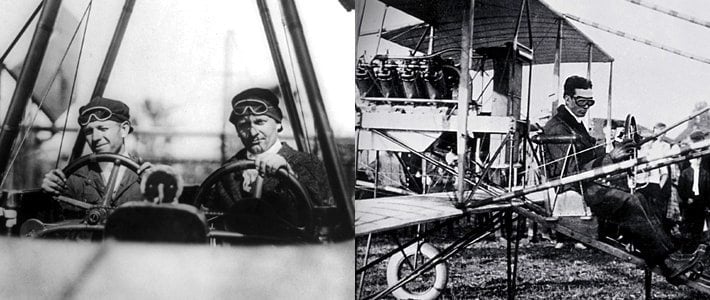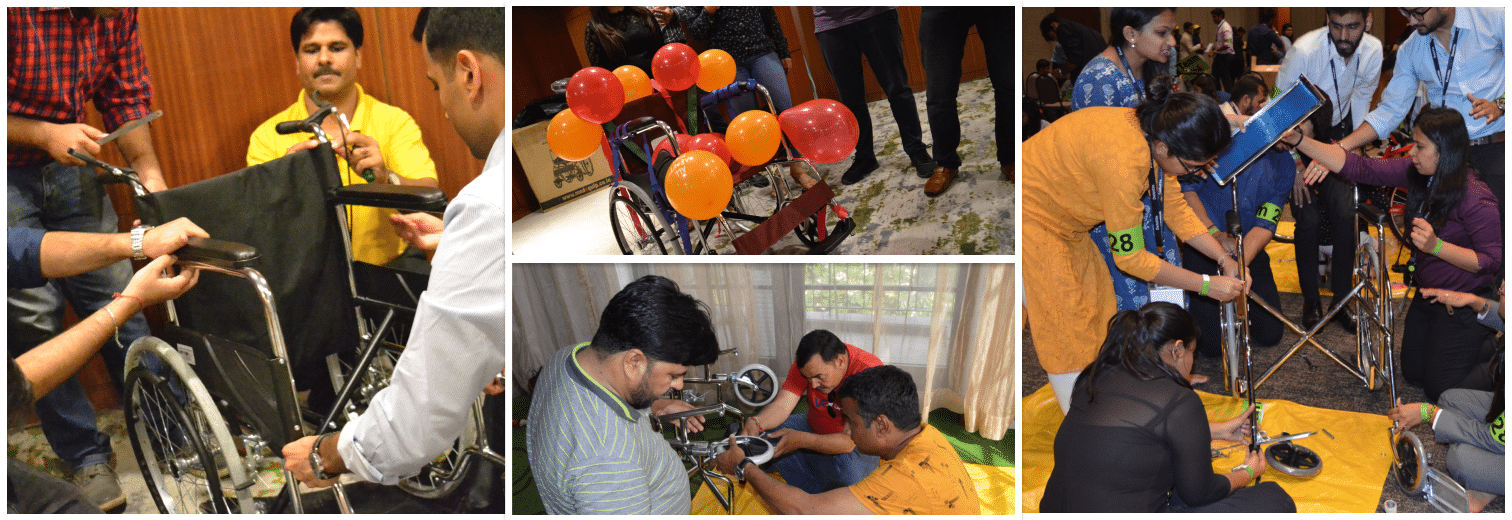In numerous team-building and leadership interventions that we at FocusU facilitate, one common question that often comes up is: “Are there inspiring examples of great teams outside of sports?” Sports stories do capture our imagination—they’re dramatic, emotional, and often filled with high-stakes tension. But some of the most compelling team stories we’ve encountered are not on the field—they’re in labs, war rooms, design studios, and R&D units.
That’s why we decided to share a series spotlighting real-life great teams across different domains. These teams—many of whom have literally changed the world—offer enduring lessons for today’s leaders, HR professionals, and L&D practitioners.
And so, we begin with one of the most intriguing: the team behind “Skunk Works.”
What Is Skunk Works?
Table of Contents
Skunk Works is a legendary division within Lockheed Martin, tasked with designing high-security, cutting-edge advancements in aerospace technology. Since its inception during World War II, the unit has been behind some of the most remarkable innovations in aviation history—from the U-2 spy plane to the SR-71 Blackbird and the F-22 Raptor.
The division was led by Clarence “Kelly” Johnson, a brilliant engineer and visionary leader who instilled a culture of excellence, speed, and fierce independence.
We often reference Skunk Works in our leadership and innovation workshops—not just because of the technological feats, but because of the team dynamics and values that powered those feats.
The team behind “Skunk Works”
Before coming to the team behind Skunk Works, what exactly is Skunk Works? Skunk Works is a fully owned subsidiary of Lockheed Martin, tasked with designing super-secret, technological marvels in aircraft engineering. From the World War II era, this division has won numerous accolades for being the brains behind the most daring, innovative advancements in aerospace design.

Source: lockheedmartin
The story started in the World War II era, when the US Air Force, worried about the threat posed by jet fighters of the Nazis, commissioned Lockheed Martin to design a jet fighter to counter it. The team managed to turn around a proposal for a new design within just one month – this too without even being formally awarded a contract!!!This was the beginning of a long and illustrious history for Skunk Works with young engineer, Clarence “Kelly” L. Johnson at its helm. From then on, the division has gone on to become one of the most successful (albeit secretive) units of Lockheed Martin. While there are a lot of stories around the origin of the name Skunk Works , one of the popular versions is that the team used to work out of an office situated near a malodorous factory area – this used to be an inside joke for the team(incidentally, a similar factory called “Skonkworks” was part of a popular comic strip at that time). The legend goes that, one day a young team member picked up the phone randomly in office and answered “Skonkworks, inside man Culver speaking” and the name stuck. What followed later gives a glimpse of the culture of the team behind Skunk Works. Culver remarked in an interview much later that when Kelly Johnson heard about this, he promptly fired him. To quote Culver “ It didn’t really matter, since he was firing me about twice a day anyways.”

Source: lockheedmartin
You can read more details here about the origin of the name.
Culture as a Catalyst
The culture of Skunk Works was anything but traditional. From the very beginning, Johnson resisted bureaucracy. The team operated with autonomy, agility, and a maniacal focus on results.
In our experience working with high-performing teams, we’ve noticed that success often comes down to how the team operates—not just what they’re tasked with. The culture at Skunk Works wasn’t just about work ethic—it was about clarity, trust, and accountability.
One of the early success stories was how the team turned around a proposal for a new jet fighter within just one month—even before a formal contract was awarded. That level of commitment and initiative isn’t built overnight — it’s embedded in culture.
How did a small group of talented engineers turn this secretive division into one of the most respected icons of defense aircraft design? Some of the answers seem to lie with the culture that was setup in the early days of the organization. Being fiercely passionate about results has been one of the core elements of the Skunk Works culture from early days – they designed and built their first fighter in a record 143 days!!! Some of the ground rules that guided their team were so powerful that the company institutionalized them as “Kelly’s 14 Rules and Practises” – they are followed even to this day in the way they work. With a completely unconventional approach, to cut through bureaucracy that traditionally slowed down defense programs, Kelly’s Rules became the stuff of legend in an industry known for being slow and traditional. Some of the rules are worth a special mention here –
“The number of people having any connection with the project must be restricted in an almost vicious manner. Use a small number of good people (10% to 25% compared to the so-called normal systems)” – Clearly this is true for a lot of organizations that we have worked with as well. Most of the high performing teams that we have worked with are small, well-knit groups of individuals who are well aware of their purpose and work with an almost fanatical dedication to the team goal. This might go against the conventional wisdom where at annual company meetings, everyone is addressed as “one big team”, while in reality they are just a group of disparate individuals with different goals, sharing nothing other than the logo in their identity cards.
“There must be mutual trust between the military project organization and the contractor, the very close cooperation and liaison on a day-to-day basis. This cuts down misunderstanding and correspondence to an absolute minimum” – Clearly in addition to being a close knit unit, teams also have to work with other units within their own organizations or at client side. A good working relationship based on trust is essential to ensure that the team’s progress is not stymied by turf wars and lack of communication norms.
The other rules as well, show a clarity of thought and purpose which seem to have made Skunk Works, a close knit team of fiercely independent, passionate individuals who went from success to success. The fact that the division formally incorporated Kelly’s Rules as part of the company culture is a glowing tribute to the amazing team behind Skunk Works. The results produced by the division, even 70 years after the humble origins of the division, are legendary – have a look at some of the their recent products which they have contributed to the Defense industry

Source: lockheedmartin
- The F22 Raptor, unquestionably the best fighter aircraft in existence today has been created by Skunk Works
- In the era of the Cold War, the fastest (even today as per published data) airplane in the world, SR 71 “Blackbird” is a Skunk Works creation
Humor, History, and High Stakes
The name “Skunk Works” itself has an interesting origin. As legend goes, a team member once answered a phone call with the words “Skonkworks, inside man Culver speaking,” referencing a smelly chemical plant nearby and a comic strip of the time. The name stuck.
But the anecdote doesn’t end there. Kelly Johnson promptly fired Culver—for the third or fourth time that day. The culture was intense, direct, and focused. But it was also human and filled with inside jokes, shared stories, and a sense of mission.
In our experience, this balance of high performance and cultural intimacy is what defines enduring teams.
What Can Corporate Teams Learn from Skunk Works?
We often say that a team doesn’t need to be developing fighter jets to think like Skunk Works. The mindset matters more than the industry.
Here are some insights we’ve brought into our work with corporate teams:
Autonomy accelerates ownership. When people are trusted with decisions, they rise to the occasion.
Speed isn’t about working faster — it’s about cutting clutter. Skunk Works thrived because it stripped away layers of approvals and reporting.
Courageous leadership creates clarity. Kelly Johnson wasn’t afraid to take tough calls — and his team respected him for it.
Codify what works. The fact that Kelly’s 14 rules were documented and institutionalized shows the value of reflection and knowledge transfer.
We’ve seen organizations emulate these practices in modern contexts—cross-functional pods, lean innovation labs, and even internal incubators. The language may have changed, but the intent remains the same.
Still Breaking Barriers
Even today, 70+ years later, Skunk Works continues to lead aerospace innovation. The division’s legacy includes:
The SR-71 Blackbird, the fastest airplane ever built.
The F-22 Raptor, widely regarded as the most advanced fighter jet.
These are not just technological marvels — they are reminders of what focused, passionate, and well-led teams can achieve.
We often challenge leaders in our programs with this question: What’s your version of Skunk Works? What team in your organization is quietly doing brilliant work—and what would it take to enable their next big leap?
Final Thoughts
Stories like Skunk Works offer us more than inspiration. They offer direction.
They show us that great teams are not a matter of chance. They are built — intentionally, deliberately, and with care.
Whether you’re in manufacturing, tech, pharma, or finance, the Skunk Works story invites you to think differently about how teams are formed, empowered, and held accountable.
As we continue this series, we’d love to hear from you: What are some of your favorite examples of great teams? What stories inspire your leadership journey?
Let’s keep learning from the legends.
Stay tuned for the next part in this series!





